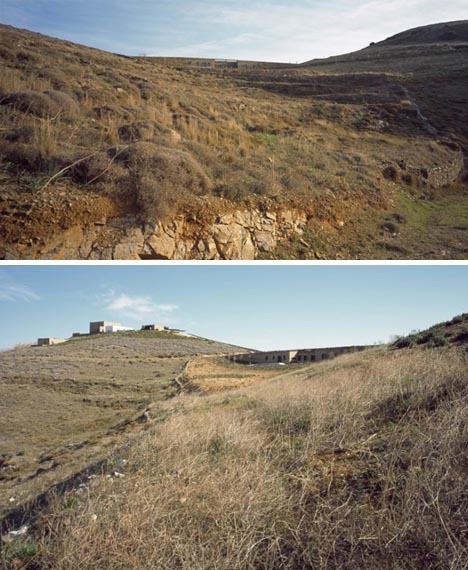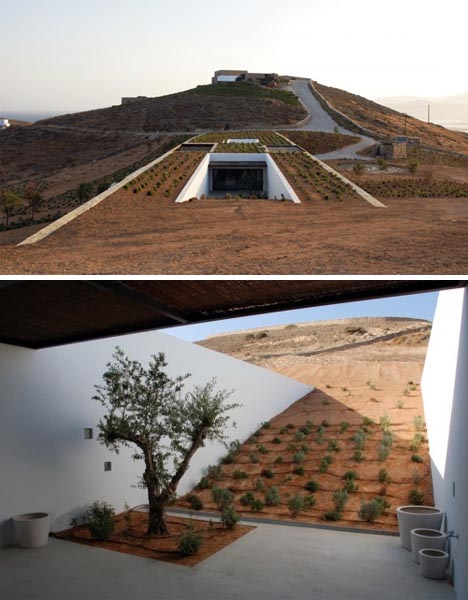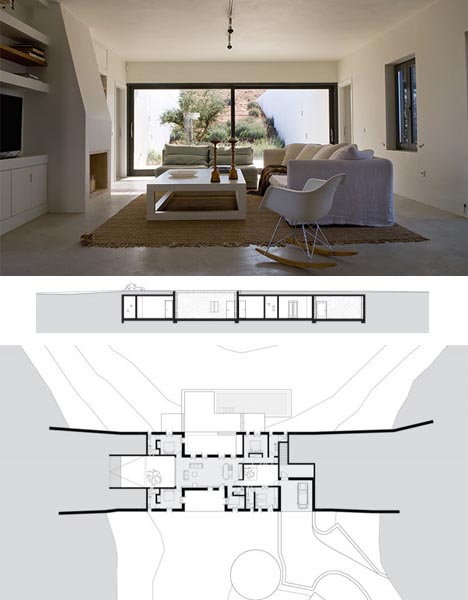

There are people living underground everywhere from the Swiss Alps to Las Vegas and the Caves of
Cappadocia to the Wild West of America, but few strike such a stunning balance between their natural-landscape surroundings and artificial-dwelling interiors as this semi-subterranean stone home camouflaged, buried and half-hidden in th arid desert climate of rural Greece.

The overall shape of this long rectangular structure responds to green needs (controlled natural light, heat and cooling cross-winds) as well as the slopes of two adjacent hillsides – a simple flat, closed and box-like plan that remains unassuming in the relatively bare surroundings. The house emerges only in the center, and even then looks as much like a half-buried ruin as a contemporary underground home.

Shrubs and dirt continue smoothly from the hills onto the roof as if they had blown and grown there for year, while portholes down into courtyard spaces let light in but are not visible to viewers of the house on the surrounding ground. Like the remnants of an ancient bridge, the sides touching neighboring slopes seem more like they were covered over time than built into the hills.

At first glance, this residence by Deca seems to have little in common with Classical Greek architecture – there are no columns, nor classic forms of decoration, and yet it is simple, semi-symmetrical, one-story all about enclosure versus exposure, light against space – open interior courtyards matched by impressive exterior stone walls . One of the most memorable points of convergence is the slope of the landscape down into one of these interior courtyards, allowing a physical connection between the open domestic space below and the (semi-) green rooftop above – it almost looks as if the wind blew this feature into place.



